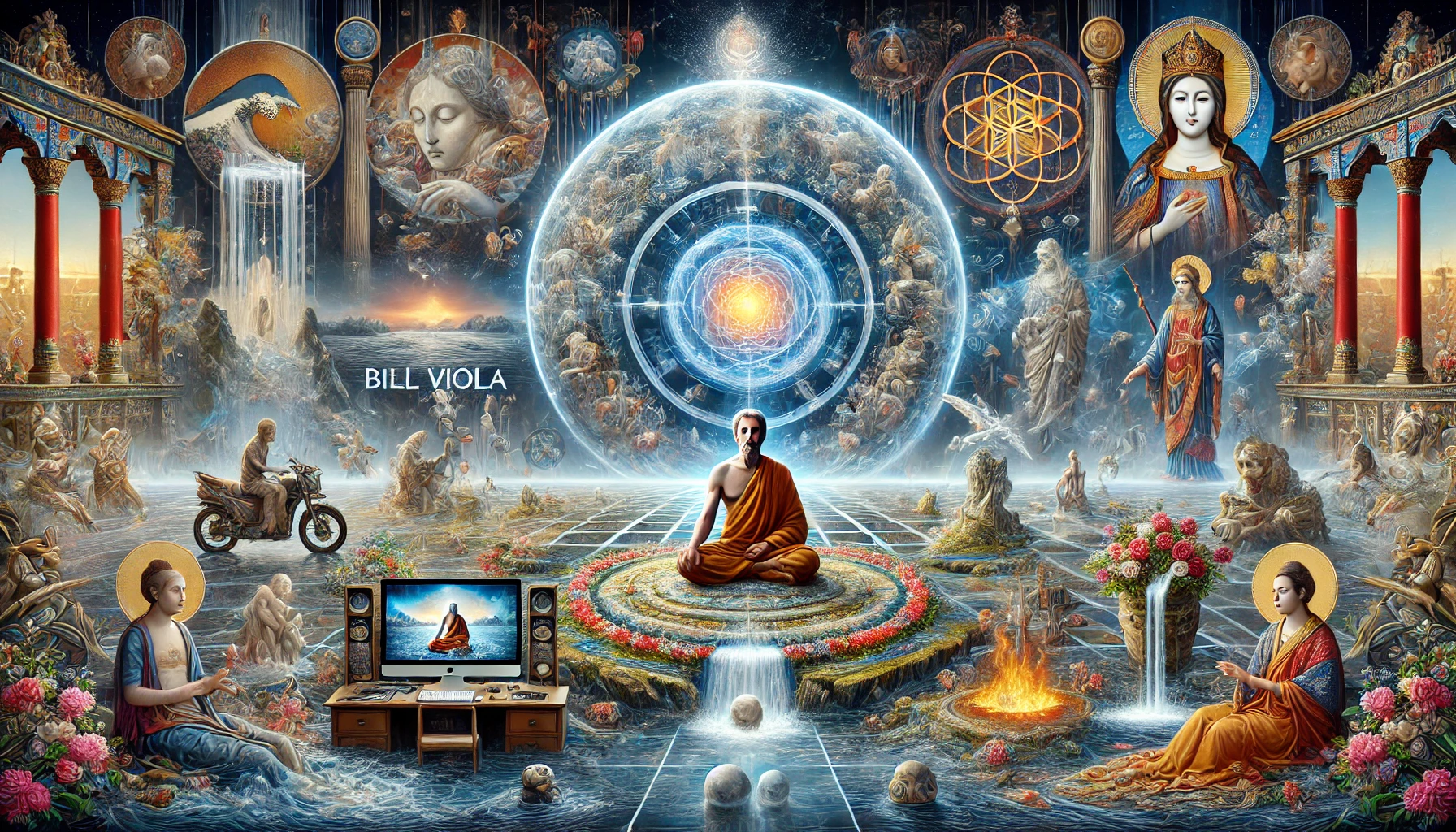Bill Viola, whose extensive engagement with video art was crucial in establishing the medium as a cornerstone of contemporary art, passed away on July 12 at his home in Long Beach, California. He was 73 years old, and the cause of death was complications related to Alzheimer’s disease. James Cohan Gallery confirmed the news.
Viola's works were profoundly centered on themes of human consciousness and fundamental experiences such as birth, death, and spirituality. He explored mystical traditions from Zen Buddhism to Islamic Sufism and incorporated elements of Western devotional art from the Middle Ages and the Renaissance. His videos often juxtaposed themes of life and death, light and dark, noise and silence, immersing viewers in both image and sound using cutting-edge technologies.
“I first used the camera and lens as a surrogate eye, to bring things closer, or to magnify them, to experiment with perception, to extend vision and make lengthy observations of simple objects,” Viola said in a 2015 interview. “Once you do that, their essence becomes visible. So I suppose I was always interested in the inner life of the world around me.”
A Legacy in Video Art
Beginning in the 1970s, Viola created a wide range of works, including videotapes, architectural video installations, sound environments, electronic music performances, flat panel video pieces, and works for television broadcast. These contributions significantly expanded the scope of video art, establishing Viola as one of its most notable practitioners.
Born in 1951, Viola grew up in Queens and Westbury, New York, and attended P.S. 20 in Flushing. He earned his BFA in experimental studios from Syracuse University in 1973, where he studied visual art with Jack Nelson and electronic music with Franklin Morris.
Between 1973 and 1980, Viola studied and performed with composer David Tudor in the music group Rainforest, later known as Composers Inside Electronics. He also worked as a technical director at the pioneering video studio Art/tapes/22 in Florence, Italy, from 1974 to 1976. During this period, he encountered the work of other seminal video artists such as Nam June Paik, Bruce Nauman, and Vito Acconci.
Viola was an artist-in-residence at New York’s WNET Thirteen Television Laboratory from 1976 to 1983, where he created a series of works that premiered on television. He traveled to the Solomon Islands, Java, and Indonesia to record traditional performing arts between 1976 and 1977. Later that year, Viola was invited to show his work at La Trobe University in Melbourne, Australia, by cultural arts director Kira Perov. The two married and began a lifelong collaboration.
In 1983, he was appointed as an instructor in advanced video at the California Institute of the Arts in Valencia, California. He served as a Getty Research Institute scholar-in-residence in Los Angeles in 1998 and was elected to the American Academy of Arts and Sciences in 2000.
Viola received numerous accolades throughout his career, including a Guggenheim Fellowship for fine arts in 1985 and a MacArthur “Genius” Fellowship in 1989. His work was featured in some of the world’s most prestigious exhibitions, such as Documenta VI in 1977, Documenta XI in 1992, the 1987 and 1993 editions of the Whitney Biennial, and the 2001 Venice Biennale.
International Recognition
In 1995, Viola represented the United States at the 46th edition of the Venice Biennale, where he produced the series “Buried Secrets,” including one of his most renowned works, The Greeting. This piece offered a contemporary interpretation of Pontormo’s oil painting The Visitation (ca. 1528–30). In 2002, the Deutsche Guggenheim Berlin and New York’s Guggenheim Museum commissioned his digital fresco cycle in high-definition video, titled Going Forth By Day.
Viola's work was the subject of a major 25-year survey at the Whitney Museum of American Art in 1997, which subsequently toured internationally. Major museum retrospectives of his work have been held at the Grand Palais in Paris (2014), the Palazzo Strozzi in Florence (2017), the Guggenheim Bilbao in Spain (2017), and the Barnes Foundation in Philadelphia (2019). In 2019, his work was exhibited alongside Michelangelo's at the Royal Academy of Art in London.
Viola is survived by his wife, Kira Perov, who has been the executive director of his studio since 1978, and their two children.
“One thing that’s very exciting about video that has turned me on since I first saw this glowing image way back in 1970 is that it can be so much,” Viola said in a 1995 interview with Charlie Rose. “Furthermore, what’s really exciting is I don’t think it’s been since really the Renaissance where artists have been able to use a medium that one could say is the dominant communication form in society.”

